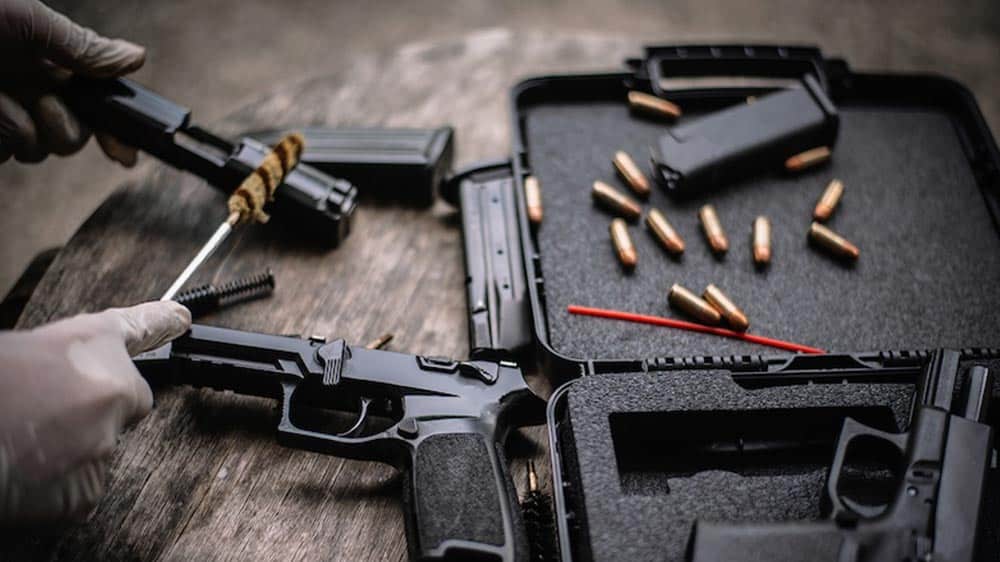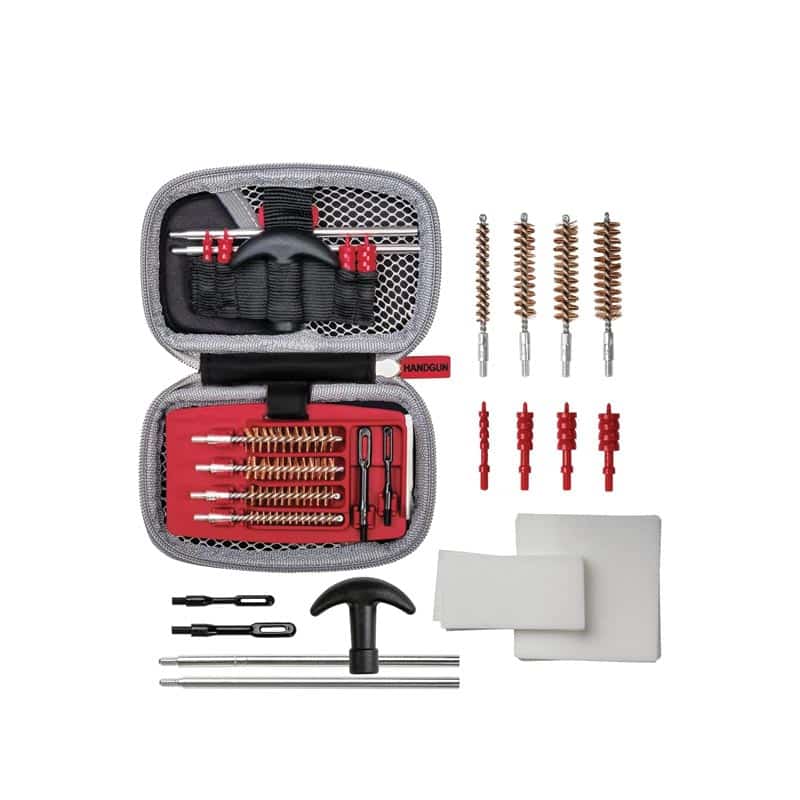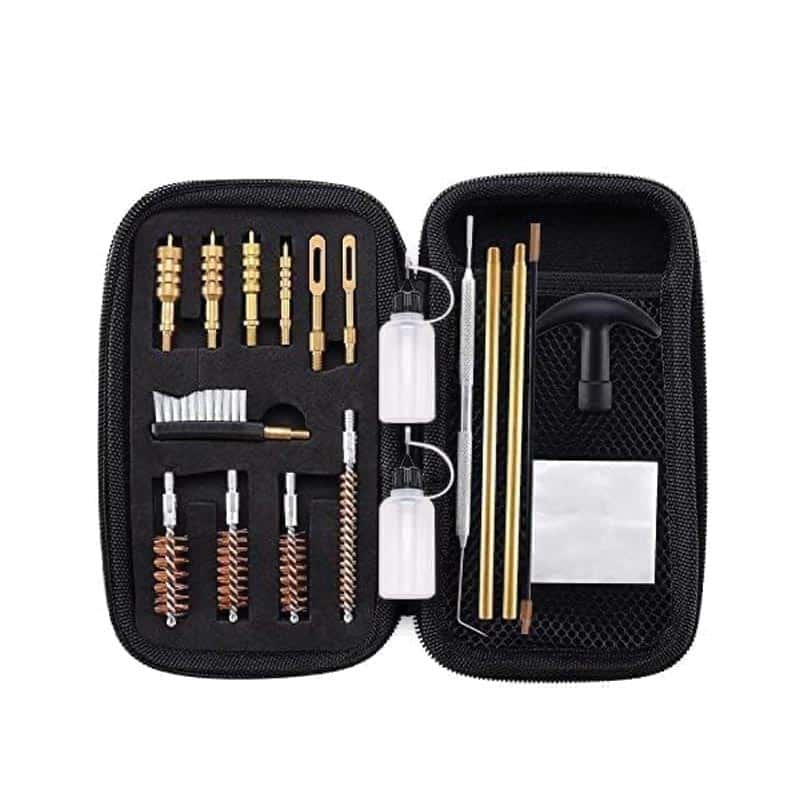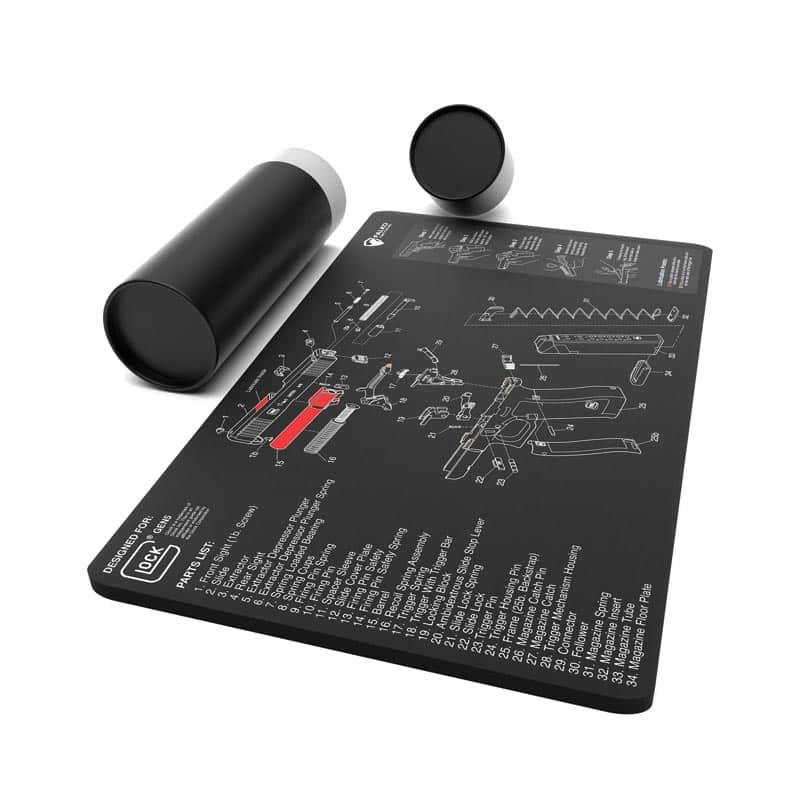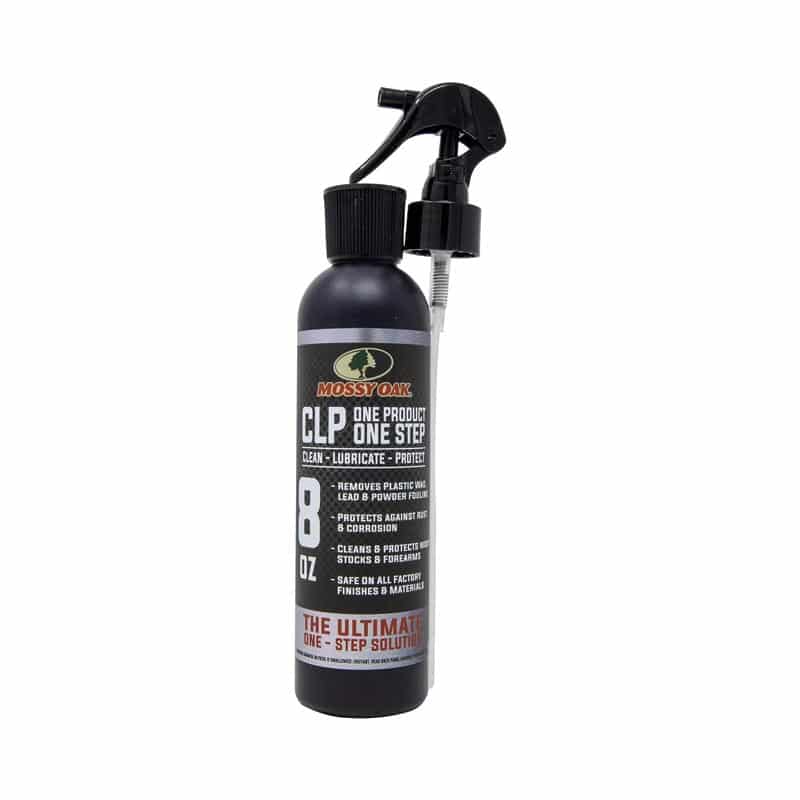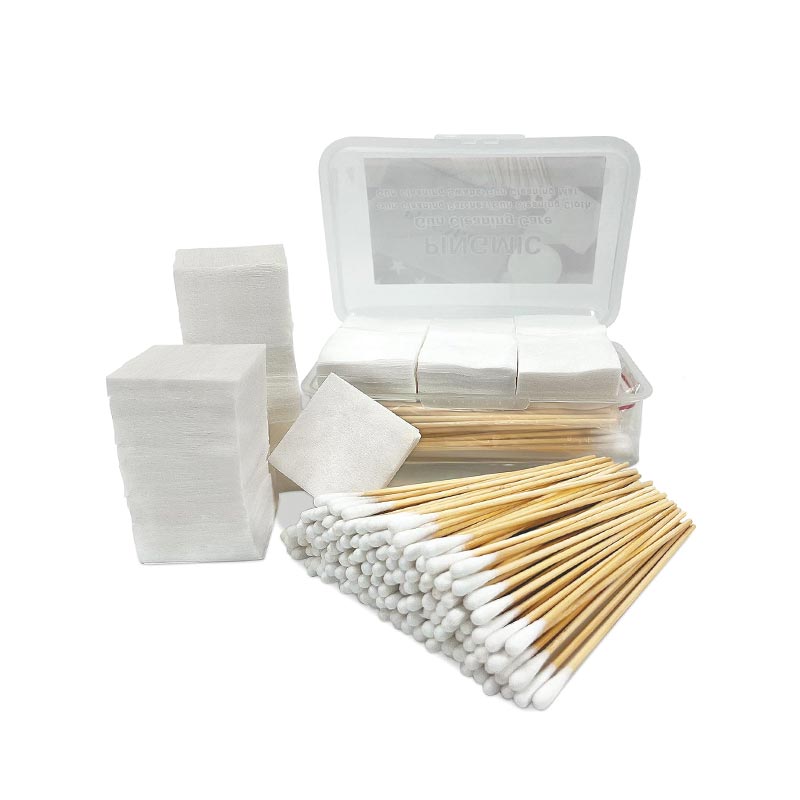How Often Should I Clean My Firearm?
Cleaning your firearm should be a regular part of its maintenance, especially if it’s used frequently or carried for self-defense. Making it a habit to thoroughly clean your firearm after each use, ridding it of any residual powder, lead, or copper deposits, is crucial for maintaining its reliability and ensuring that it’s always ready for whatever situation arises. Even if not used, a monthly clean is advisable to prevent the accumulation of lint, dust, or sweat that can affect its operation.
It’s also important to clean and dry your firearm promptly if exposed to harsh conditions such as rain or saltwater and to give it a thorough cleaning before long-term storage. Always check the manufacturer’s recommendations for specific care instructions tailored to your firearm’s needs. Just like a well-told story paints vivid pictures in our minds, so does regular upkeep keep your firearm functioning optimally. It’s about safety and performance – making sure everything is up to par. You see, the trick isn’t just cleaning it; it’s also inspecting each part for wear and tear.
Why Firearms Maintenance and Cleaning Is Important
As a responsible gun owner, particularly of a concealed carry firearm, understanding the importance of regular maintenance and cleaning is paramount. Keeping your firearm in top shape means it’ll work when you need it, won’t let you down, and will last a long time. Regular cleaning and maintenance not only keep your firearm in optimal working condition but also provide an opportunity to inspect it for wear and tear or potential malfunctions. Remember, the concealed carry firearm you rely on for defense should always be in the best possible condition to guarantee its functionality when it matters most.
Understanding Your Particular Make and Model
The first step in maintaining your concealed carry firearm is to thoroughly understand your specific make and model. Every gun has its own way of breaking it down, cleaning it up, and keeping it running smoothly. It is crucial to refer to the manufacturer’s manual for specific instructions. Familiarize yourself with the parts of your firearm, how they work together, and their individual maintenance needs. Grasping how each part of your gun operates and its maintenance quirks is key to keeping it in top-notch condition.
The Essential Gear and Materials You’ll Need
Before starting the cleaning process, ensure you have the necessary tools and supplies. Before you dive into cleaning, make sure your kit’s stocked with the right gear: solvents to tackle grime, lubricants for a smooth action, rods and brushes to scour the barrel, plus patches and cloths for a final polish—and don’t forget a trusty toolkit.
- Cleaning solvents to remove residue and buildup
- Lubricants to ensure smooth operation
- Cleaning rods and brushes to clean the barrel
- Patches and rags for wiping down parts
- A small toolkit for disassembly and reassembly
Basic Cleaning Steps
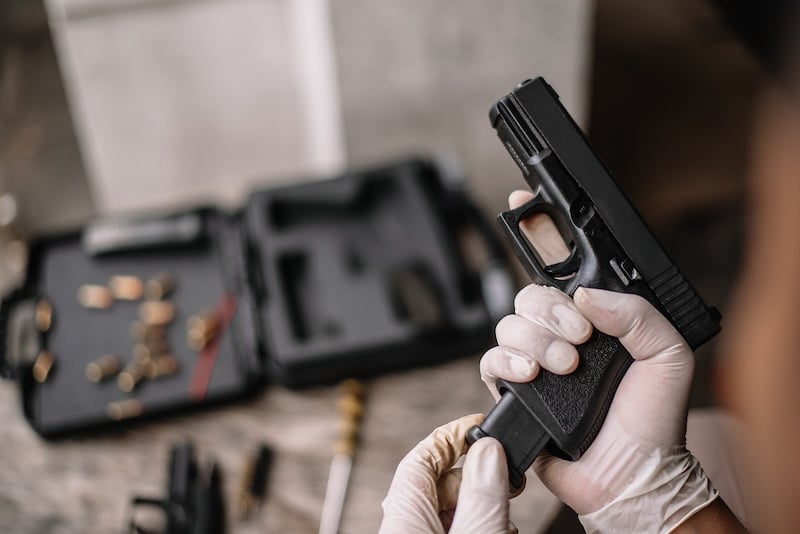
Safety First: Ensure the Firearm is Unloaded Before Disassembly
- Before starting any maintenance, it’s crucial to make sure your firearm is completely unloaded. Remove the magazine and then pull back the slide or open the action to check that there is no round in the chamber.
- Visually inspect the chamber and magazine well to confirm they are empty. It’s a good habit to double-check this.
- Once you’ve confirmed the firearm is unloaded, keep it pointed in a safe direction during the entire cleaning process.
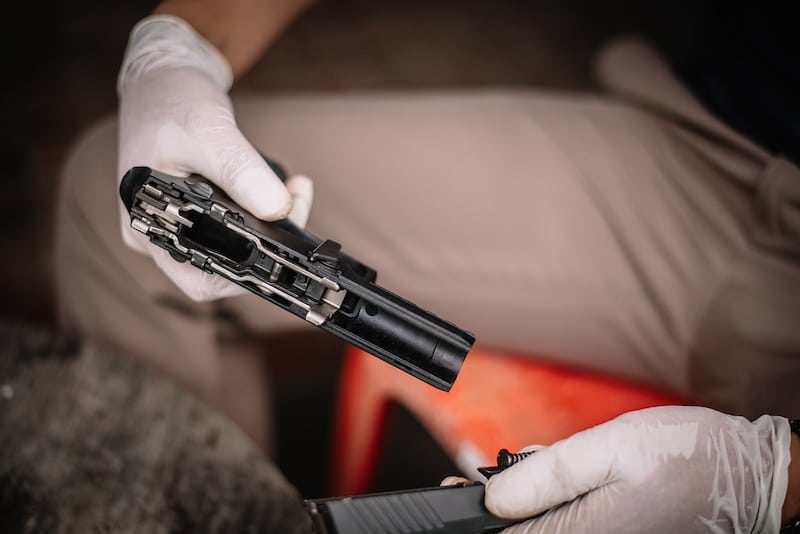
Disassembly: Follow the Manufacturer’s Guide to Safely Disassemble Your Firearm Into Its Main Components
- Refer to the firearm’s manual for specific instructions on disassembly. Each model might have slightly different steps or precautions.
- Typically, disassembly involves removing the magazine, ensuring the firearm is safe, and then removing the slide from the frame. Some models may require additional steps or the removal of pins.
- Only disassemble your firearm to the extent necessary for cleaning. Over-disassembling can lead to damage or reassembly issues.
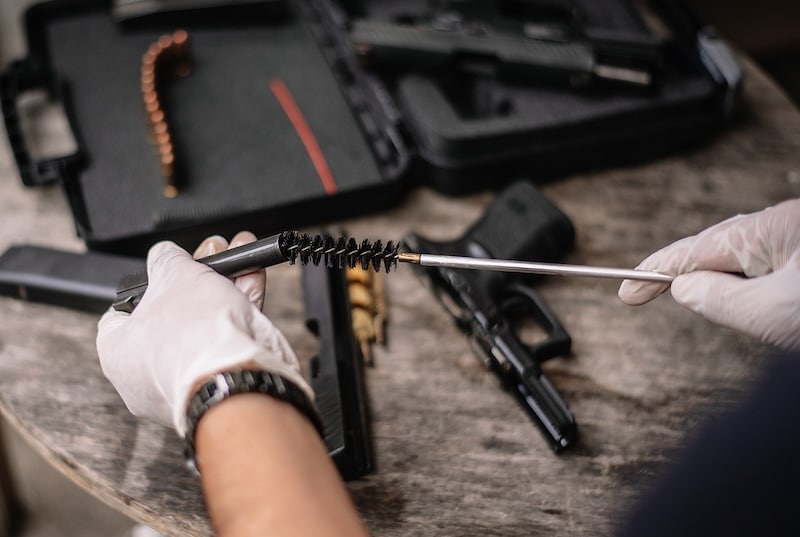
Barrel Cleaning: Use a Cleaning Rod and Brush to Scrub the Inside of the Barrel with Solvent
- Apply a solvent specifically designed for firearms to a bore brush. Run the brush through the barrel several times to loosen up the residue and lead deposits.
- After brushing, run cleaning patches soaked in solvent through the barrel. Change patches and repeat until a patch comes out clean.
- For semi-automatics, pay attention to the barrel’s ramp and chamber, as these areas can accumulate significant residue.

Cleaning the Slide, Frame, and Magazine: Wipe Down These Parts with Solvent
- Use a solvent-soaked brush or cloth to gently clean the slide, paying special attention to the breech face and area around the firing pin.
- Wipe down the frame, focusing on areas where residue accumulates, like the rails and around the trigger assembly.
- Clean the magazine inside and out. Ensure that the follower moves freely and that the spring is not damaged or overly compressed.
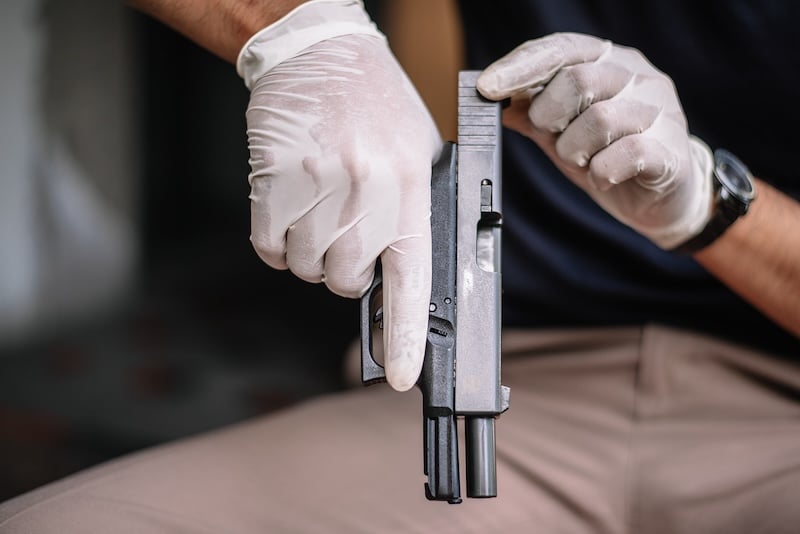
Inspection: As You Clean Each Part, Inspect for Signs of Wear or Damage
- As each part is cleaned, inspect it for any signs of wear, cracking, or other damage. Look for unusual marks or scratches that might indicate a problem.
- Check the springs for signs of weakness or corrosion.
- Inspect the barrel for any signs of pitting, bulging, or excessive wear.
Lubrication for Smooth Operation
Once the firearm is clean, it’s time to lubricate it. Apply a small amount of lubricant to the moving parts of the firearm. This typically includes the slide rails, barrel, and any other parts as indicated in the manual. Be careful not to over-lubricate, as this can attract dirt and debris.
Reassembly and Function Check
After cleaning and lubricating, reassemble your firearm. Make sure all parts are correctly aligned and securely in place. Perform a function check as described in your manual to ensure everything is working correctly.
Storage Tips for Maintained Firearms
Proper storage is essential to maintain the condition of your firearm. Store your firearm in a dry and cool place. Use a gun safe or storage case to protect it from the elements and unauthorized access. Consider using desiccants or a dehumidifier to control moisture.
Conclusion
Regular cleaning and maintenance of your concealed carry firearm are non-negotiable aspects of responsible gun ownership. Staying on top of your firearm’s upkeep not only primes it for peak performance but also keeps you ready to handle the unexpected with confidence. Commit to a regular maintenance schedule, and always stay informed about the best practices for your specific firearm model.
Stick to these tips, and you can count on your concealed carry to be both safe and dependable when it matters most.

